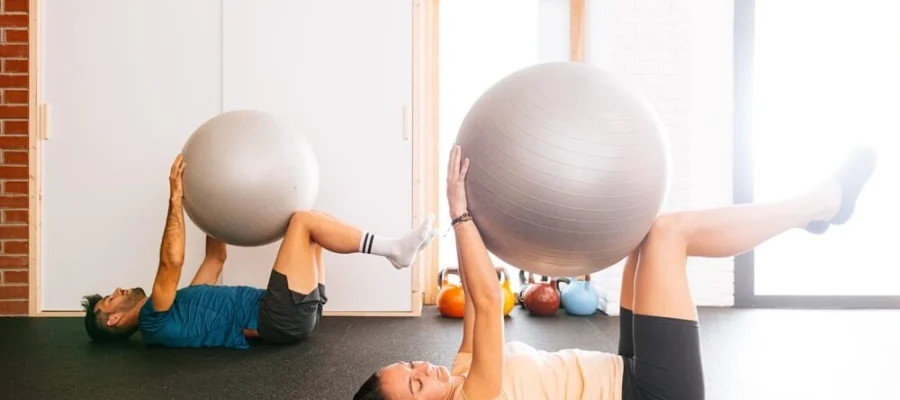The dead bug exercise is a simple yet powerful movement designed to improve core strengthening, enhance stability, and support overall functional fitness. Whether you’re recovering from an injury or looking to boost your fitness routine, this exercise is accessible and effective for all levels—no equipment required.

Content
What Is the Dead Bug Exercise?
The dead bug exercise is a controlled movement that targets your core muscles while minimizing stress on your lower back. Named because your limbs move in a way that resembles a bug lying on its back, this exercise helps train your muscles to stabilize your spine during dynamic activities.
It’s especially valuable because it trains the deep core muscles in isolation, promoting better spinal alignment and reducing the risk of compensatory movements that can lead to injury.
When Should You Do the Dead Bug Exercise?
This exercise is widely recommended in physiotherapy settings, especially for individuals managing back pain or recovering from injury. It’s also an excellent choice for athletes and beginners who want to develop a strong core foundation before moving on to more complex movements.
The dead bug is ideal during early rehabilitation phases because it’s gentle on the body yet effective in activating the core musculature. Additionally, it helps those with sedentary lifestyles improve their posture and functional movement patterns.
Muscles Engaged by the Dead Bug Exercise
The dead bug primarily works your deep abdominal muscles, including the transverse abdominis and rectus abdominis. It also engages your hip flexors and lower back muscles, making it an effective way to improve posture and reduce the risk of injury.
Strengthening these muscles plays a crucial role in maintaining pelvic stability and protecting the spine during everyday activities like lifting, bending, and twisting.
How to Perform the Dead Bug Exercise Correctly
Follow these steps to perform the dead bug exercise safely and efficiently:
- Lie flat on your back with your arms extended straight above your chest.
- Lift your legs, bending your knees at a 90-degree angle.
- Slowly lower your right arm behind your head while simultaneously extending your left leg toward the floor—keep your lower back pressed into the ground.
- Return to the starting position and repeat with the opposite arm and leg.
- Perform 8–12 repetitions on each side, focusing on controlled, deliberate movements.
Key points to remember include keeping your core engaged, breathing steadily, and avoiding arching your lower back during movement.
Beginner Modifications for the Dead Bug Exercise
If you’re new to the exercise or find it challenging, try these modifications:
- Keep your feet on the ground and move only your arms.
- Lower your legs less far to maintain contact between your lower back and the floor.
- Perform fewer repetitions and gradually increase as your strength improves.
Using these beginner-friendly adjustments ensures you build strength without compromising form, which is critical to preventing injury and maximizing benefits.
Progressing Your Dead Bug Exercise
Once comfortable with the basic movement, you can increase the difficulty by:
- Holding light weights in your hands.
- Adding a resistance band around your thighs.
- Increasing the duration of each repetition to build endurance.
- Slowing down the movement to challenge control and coordination.
Progressing the dead bug exercise helps maintain continuous improvement in core stability and keeps the exercise engaging as your fitness level advances.
Benefits Beyond Core Strengthening
The dead bug exercise does more than just build abdominal exercise. It enhances mobility in the hips and shoulders, promotes better posture, and supports functional movement by improving how your body stabilizes itself during motion.
For athletes, this translates to improved performance and reduced injury risk, while for those recovering from injury, it means safer and more effective rehabilitation.
Integrating the Dead Bug Exercise Into Your Routine
Incorporate the dead bug into your warm-up or cool-down to activate your core muscles before or after physical activity. Combining it with other core exercises, like planks or bridges, can create a balanced routine that targets multiple muscle groups for comprehensive strength.
Remember, consistency is key—performing this exercise regularly will yield the best results over time.
Conclusion
The dead bug exercise is a foundational movement that offers significant benefits for core strengthening, injury prevention, and overall physical function. Its low-impact nature and adaptability make it suitable for beginners and seasoned athletes alike.
By mastering the proper technique and progressively increasing difficulty, you can build a resilient core that supports every movement you make—from everyday tasks to intense workouts. If you’re experiencing back pain or want guidance on tailoring the dead bug exercise to your needs, consulting a qualified physiotherapist is a smart step.
Start incorporating the dead bug into your fitness routine today and enjoy the lasting benefits of a stronger, more stable core.
FAQs
What muscles does the dead bug exercise work?
It primarily targets the deep core muscles, including the transverse abdominis, rectus abdominis, hip flexors, and lower back muscles.
Is the dead bug exercise good for beginners?
Yes, it’s beginner-friendly and offers modifications to suit different fitness levels, making it ideal for those new to core training.

Karen is a health blog author who has been writing about healthy living since 2013. She started her journey by adopting a vegan diet and eating only organic foods, but the more she learned, the more she realized that we should all be eating plant-based diets exclusively. As an expert in nutrition and wellness, Karen blogs to educate readers on how they can live happier and healthier lives through food choices!











